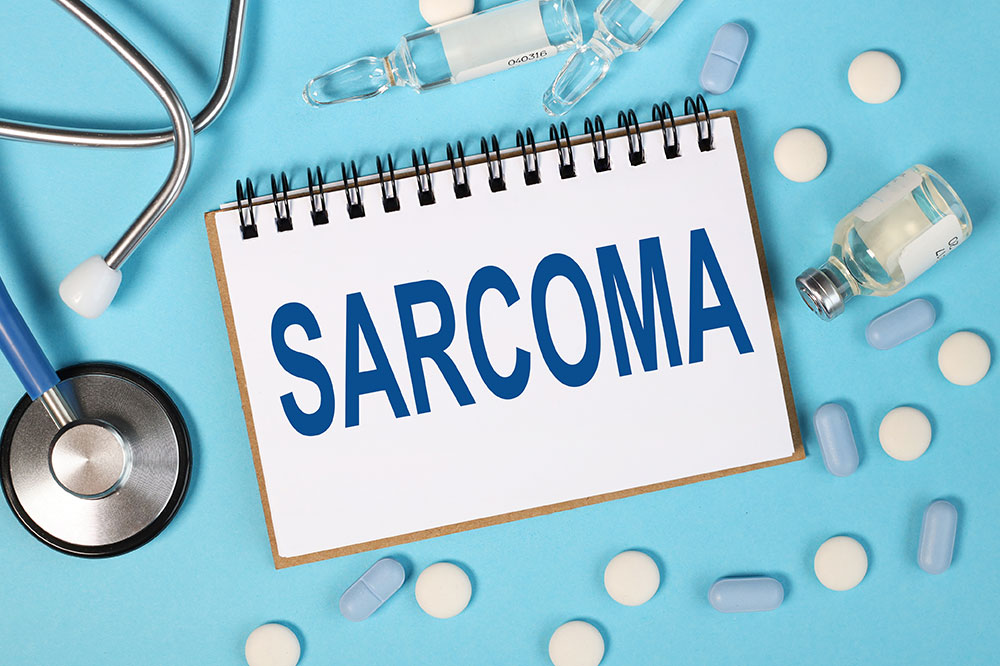
Synovial sarcoma – Symptoms, causes, and management
Synovial sarcoma is a rare type of cancer that affects the body’s soft tissues, including muscles, tendons, and ligaments. Despite its name, it does not arise from the synovium, the tissue that lines the joints. Rather, it is thought to arise from primitive mesenchymal cells, which give rise to the various types of soft tissue in the body. This type of cancer can occur at any age but is commonly diagnosed in young adults.
What are the symptoms?
The symptoms of synovial sarcoma depend on the location of the tumor. The tumor in the limbs can cause pain, swelling, and a limited range of motion in the affected joint. The tumor in the chest or abdomen can cause difficulty breathing or eating, abdominal pain, and a feeling of fullness. Here are some major symptoms of this disease.
- Pain
The most common symptom of synovial sarcoma is pain, especially if the tumor is in the limbs. The pain may be dull or sharp and may be constant or intermittent. It may also worsen at night or with movement. - Swelling
Another common symptom is swelling in the affected area. This may be due to the growth of the tumor or because of the fluid buildup in the tissues. - Limited range of motion
If the tumor is located near a joint, it can cause a limited range of motion and stiffness in the affected joint. This may make performing normal activities, such as walking or bending difficult. - Difficulty breathing or eating
The tumor in the chest or abdomen can put pressure on nearby organs and cause difficulty breathing or eating. This may manifest as shortness of breath, chest pain, or difficulty swallowing. - Abdominal pain
Synovial sarcoma in the abdomen can also cause abdominal pain or discomfort. This may be accompanied by bloating, nausea, or vomiting. - Feeling of fullness
In addition to abdominal pain, synovial sarcoma in the abdomen can cause a feeling of fullness or pressure in the stomach.
It is important to note that not all patients will experience these symptoms, and some may not have any symptoms until the cancer has advanced. If one is experiencing persistent symptoms, speaking with a healthcare professional is essential.
What are the causes?
The exact cause of synovial sarcoma is unknown but here are some possible causes as per the researchers:
- Genetic mutations
Synovial sarcoma is believed to be caused by genetic mutations that occur spontaneously or due to the exposure to environmental factors. These mutations can lead to the development of cancerous cells. - Chromosomal abnormalities
Some researchers have identified specific chromosomal abnormalities associated with synovial sarcomas, such as the translocation of chromosomes X and 18. However, the significance of these abnormalities is not well understood. - Radiation exposure
Exposure to radiation, either from medical treatments or environmental factors, has been linked to an increased risk of synovial sarcoma. - Previous injury
Some studies suggest that previous injury to the affected area may increase the risk of developing synovial sarcoma; however, the exact mechanism behind this is unclear. - Family history
Although rare, there may be a genetic component to synovial sarcoma, as some cases have been reported to run in families. However, further research is needed to understand the genetics of this disease.
How to diagnose synovial sarcoma
The diagnosis usually involves a combination of imaging tests and biopsy. Imaging tests, such as X-rays, MRIs, or CT scans, can help identify the location and size of the tumor. A biopsy involves removing a small tissue sample from the tumor and examining it under a microscope to look for the characteristics of synovial sarcoma. Other tests, such as blood tests or a bone scan, may be done to determine if cancer has spread to other parts of the body.
What are the treatment options?
The treatment depends on the location of the tumor and the extent of its spread. Surgery is usually the first-line treatment for synovial sarcoma. It involves removing as much of the tumor as possible while preserving the surrounding tissue and function of the affected limb or organ.
Radiation therapy may also kill any remaining cancer cells and reduce the risk of recurrence. Chemotherapy may be used sometimes, especially if cancer has spread to other body parts. Other treatments, such as immunotherapy or targeted therapy, may be used in clinical trials or as part of a personalized treatment plan.
Prevention tips
There are no known ways to prevent synovial sarcoma, but here are some steps that can be taken to reduce the risk of developing other types of cancer.
- Maintaining a healthy lifestyle, including regular exercise and a balanced meal plan
- Protecting the skin from the sun by using sunscreen and wearing protective clothing
- Getting regular cancer screenings, especially if there is a family history of cancer or other risk factors
Synovial sarcoma is a rare type of cancer that can affect any part of the body but is most commonly diagnosed in young adults. The symptoms depend on the tumor’s location and the treatment options vary depending on the extent of the cancer.




